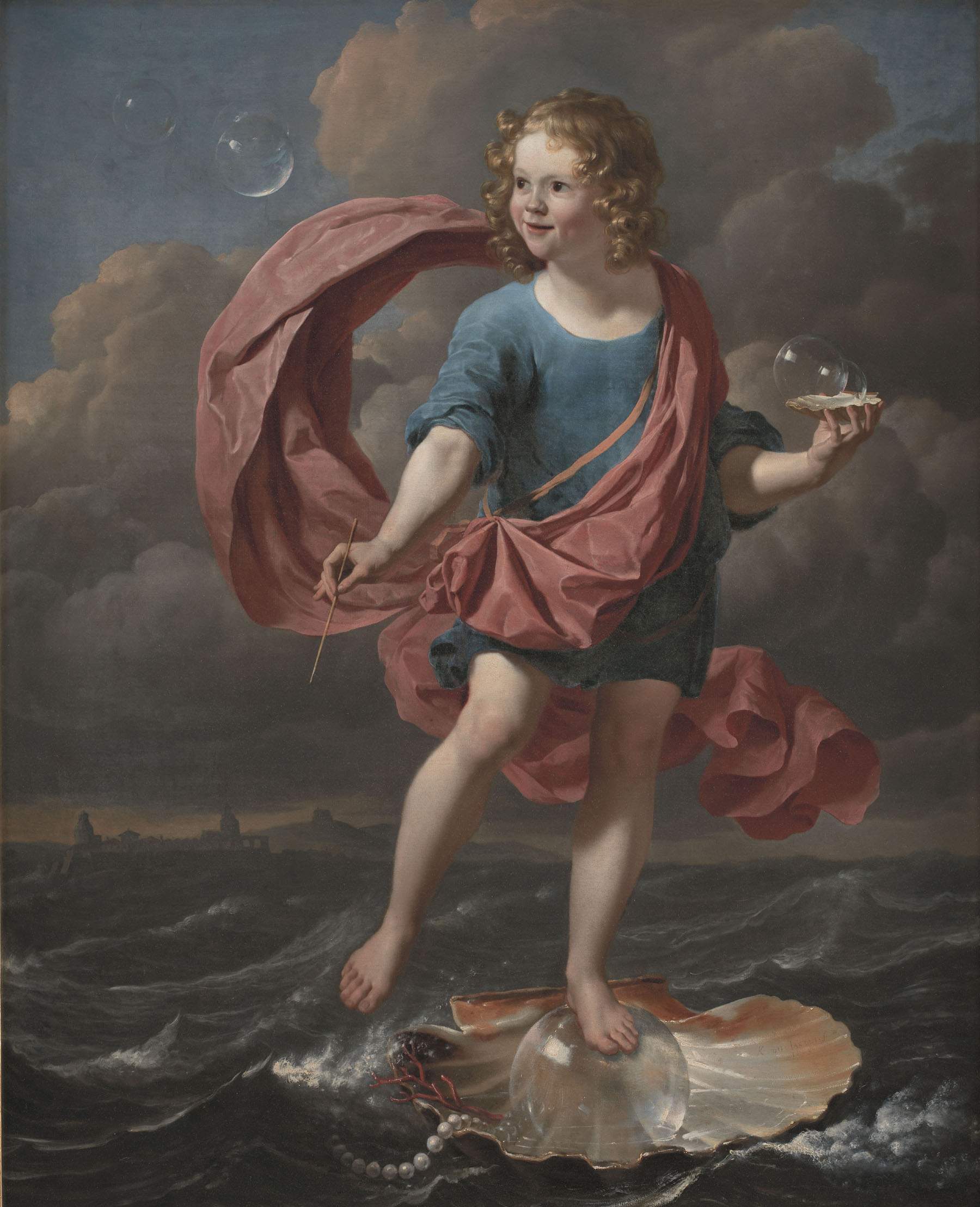An exhibition all about soap bubbles in the history of art. In Perugia
The National Gallery of Umbria in Perugia is hosting, from March 16 to June 9, 2019, the exhibition Soap Bubbles. Forms of Utopia between vanitas, art and science. The exhibition, curated by Michele Emmer, former professor of Mathematics at the Sapienza University of Rome, and Marco Pierini, director of the Gallery, aims to retrace the history of art by analyzing the theme of soap bubbles in order to investigate what were the artistic, scientific and cultural assumptions that increased the interest in this theme. The exhibition features about sixty works, with masterpieces by artists such as Fra Galgario’, Jan Bruegel the Younger, Karel Dujardin, Man Ray, Max Beckmann, Giulio Paolini, and others, from major national and international institutions, such as the National Gallery in London and the National Gallery in Washington. The inspiration for the exhibition stems from a text by Michele Emmer published in 2010, entitled Soap Bubbles Between Art and Mathematics (published by Bollati Boringhieri), in which the interrelationships with mathematics, painting, physics and architecture are explored. The important essay, the summa of a lifetime of research work, won the 2010 Viareggio Prize for the non-fiction section.
A symbol of fragility, of the transience of human ambitions, of life itself, since the 16th century soap bubbles have fascinated generations of artists for those plays of color that move on soapy surfaces, for their luster, for their lightness. The exhibition is also presented as an interdisciplinary initiative that, parallel to the artistic historical journey, recounts the birth of the scientific, physical and mathematical interest of soap foils, models of a very stable geometry of forms. A comprehensive overview of the theme is offered to the public, reaching all the way back to the 20th century with works by artists such as Man Ray, Max Beckmann, and Giulio Paolini, to its treatment in contemporary architecture, with the maquette of the famous Water Cube, the Beijing Olympic swimming pool designed by the Australian firm PTW Architects, with which China State Construction Engineering Corp and Arup Ltd collaborated.
But there are not only traditional arts: the exhibition also features a section devoted to prints and engravings, photographs, as well as posters and advertising posters. Important in this regard are the affiches from the Salce Collection in Treviso, which illustrate the great fortune of this subject for advertising purposes for the sale of products related especially to personal care, starting with the famous example of the Pears soap poster, reworked from the painting Soap Bubbles, by British painter and illustrator John Everett Millais. Parallel to the artistic journey, the exhibition documents the fundamental role played by soap bubbles in eighteenth-century research on the refraction of light and colors, to later ones about theories of minimal surfaces or organic forms of aggregation of matter. Beginning with Isaac Newton’s book, Opticks, or a Treatise of the Reflections, Refractions, Inflections and Colours of Light, dated 1706, from the Oliveriana Library in Pesaro, in which the English physicist describes in detail the phenomena observed on the surface of soapy foils, to current experiments through the ’aid of computer graphics, the exhibition also aims to highlight the importance that bubbles have played throughout contemporary science, and how these latest discoveries, in turn, continue to inspire contemporary artists and architects in their creations.
The exhibition is accompanied not only by a scientific catalog, published by Silvana Editoriale, but also by a children’s book published by Aguaplano libri with texts by Michele Emmer and illustrated by Francesca Greco. “Because blowing soap bubbles,” reads the book’s introduction, “has always been fun: some are small, some bigger, some very big; sometimes two or more stick together and then you get shapes that are no longer spherical but much more complex. If there is wind they fly far away, otherwise they sway in the air and remain as if suspended. If there is sunshine and you look at them in transparency, you can see the colors of the iris moving across the soapy surfaces.” Alongside the exhibition, there will also be a series of side events, such as shows and live performances of various kinds on the theme of bubbles; talks, guided tours, screenings, educational workshops for adults and children, and lectures will punctuate the entire period of Bubbles in the Gallery.
The exhibition is included among the Art Bonus projects of the National Gallery of Umbria for the year 2019, finding a generous and fundamental support in the Campanile Family, founder of one of the most important industrial realities of the area, SACI Industrie S.p.A. Visiting hours: Tuesday through Sunday, 8:30 a.m. to 7:30 p.m.; Monday 12 p.m. to 7:30 p.m. (last admission 6:30 p.m.). The exhibition can be visited with the National Gallery of Umbria ticket: full 8 euros, reduced 4 euros. For all info you can visit the website of the National Gallery of Umbria.
Karel Dujardin, Allegory of Human Vanity (1663; oil on canvas, 139.2 x 117.1 x 9.3 cm; Copenhagen, Staten Museum for Kunst)
Source: release
 |
| An exhibition all about soap bubbles in the history of art. In Perugia |
Warning: the translation into English of the original Italian article was created using automatic tools. We undertake to review all articles, but we do not guarantee the total absence of inaccuracies in the translation due to the program. You can find the original by clicking on the ITA button. If you find any mistake,please contact us.



























